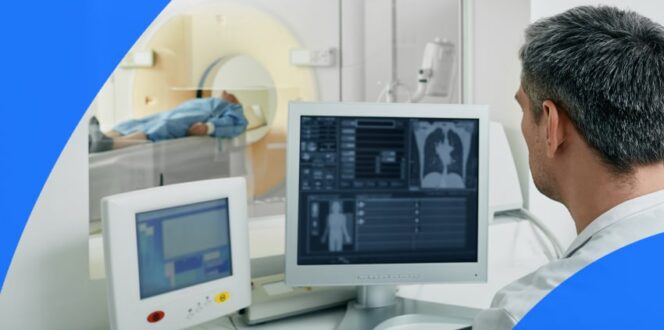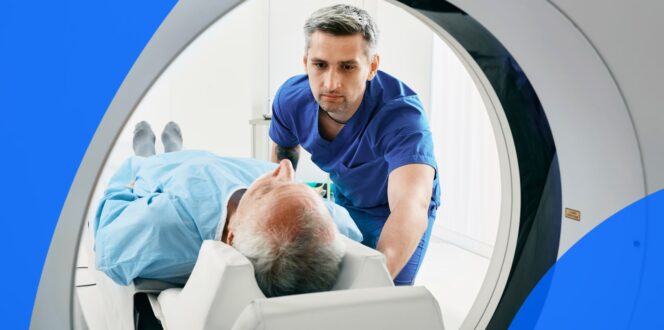Patient Spotlight: My Bone Density Scans Were Scattered Across Doctors

Blair, 32, wanted another way to manage her celiac disease and bone health, but seeing so many doctors over the span of her life made it almost impossible to keep her bone density scans and other records organized and readily available.
—
Story by Blair M.
At 25 years old, I was diagnosed with celiac disease and I knew my lifestyle needed to change. But rather than simply grabbing a few loaves of gluten-free bread off the shelf, I saw dieticians, nutritionists and various doctors who could help me on my road to recovery. However, I learned quickly that changing my diet wouldn’t solve everything.
Celiac disease is often simplified as a severe intolerance to gluten, but it’s more than that. It’s an autoimmune disease that prevents your body from properly absorbing nutrients via the small intestine. The longer celiac disease goes untreated, the more you lose out on calcium and other minerals essential to bone health. It can ultimately lead to osteoporosis – a bone density deficiency that leaves you vulnerable to falls, fractures and severe back pain.
The Turning Point
To find out whether my bones were impacted, I took a bone density test – the first of many. According to my results, I had the bones of a 60-year-old woman. I lost out on years of calcium absorption during the most critical time for bone-building.
At the time of my diagnosis, my basic understanding was that all potential problems could be solved with a gluten-free diet, but I knew others with celiac who did not follow this strict diet. My gastroenterologist, however, made a case for the more drastic approach by mentioning the risk of cancer if I continued to eat gluten and let the disease eat away at my intestines. What I didn’t know was how much of what I had already done to my body could never be reversed at my age, and how many more risk factors came along with it. After that day, I never ate gluten again.
Three years after my diagnosis, I switched family doctors and brought all my imaging on a disk to her office. Getting it was a mission – I had to go to my previous doctor at a designated time to pick it up, and drop it off at my new doctor’s office before my first appointment. I was surprised this was the only way for them to get any of my information and I wondered why there was no central database they could pull from.
After my family doctor viewed my bone density scores, she referred me to the Centre for Osteoporosis & Bone Health at Women’s College Hospital in Toronto. At my first appointment, I felt lucky to be there – the doctors and hospital staff were incredible. They set me up with another dietician, this time to manage calcium, and a physiotherapist to teach me how to exercise for bone health.
I had seen a physiotherapist before for pain and migraines, but when I learned there was more I could be doing, I felt like I missed out on three years to manage my bone health – I didn’t know what I didn’t know. It hit me how serious my bone issues were. If I didn’t take new measures for my bone health now, my quality of life would deteriorate sooner rather than later.
Every Medical Record from Every Hospital
To be proactive, I asked my family doctor if there were other specialists I should see. She sent me to another gastroenterologist at a different hospital, on a different health system. I asked her to send me for every autoimmune test, knowing that autoimmune diseases often run together.
When I was in the process of gathering all my blood tests, bone density scans and other records, there was no central system to manage all my information between specialists. I was responsible for asking every hospital for every record and it was exhausting. It was like the healthcare system didn’t care and made it as complicated as possible for me to collect my records. I was tired and just wanted to focus on my health, but I had seen so many different doctors over the years that it took what felt like forever.
At one of the many doctors’ offices I visited, I came across PocketHealth. I opened an account to help me manage my own imaging files and gain a greater sense of control. Having easy access to my records was not only helpful when going from doctor-to-doctor, it gave me the tools to prepare for my appointments. I could look back at previous consults, think about the questions I’d ask and ultimately find better treatment options. I also like knowing that when my gastroenterologist sends me for imaging, my family doctor can view the report right away.
Taking Full Control of My Health
After PocketHealth helped me get a handle on my celiac disease and osteoporosis, I shifted my attention to another health issue, one that I suffered from for years – my chronic migraines. For the first time in years I saw a neurologist, but when I was there, they asked me for my history. I drew a blank.
I’ve seen five neurologists throughout my life and have no record of any of them. So to be safe, they sent me for an MRI. I probably had one done many years back, but now I have access to those records whenever I need and can avoid going for repeat imaging. All my documentation is ready to go!
As Canadians, we’re fortunate to receive free healthcare from world-renowned doctors and specialists, but so many Canadians struggle to access care. It’s not uncommon to experience delays in treatment while waiting on imaging or test results – we’ve all been there or know someone who has. But with all the challenges facing our healthcare system, I now see the value in taking ownership of my records and how it can help me manage my health. I feel like I have greater control, and I’m confident that I’m doing all I can each day to live a healthy, quality life.
—
PocketHealth gives patients like Blair easy online access to all their medical imaging, making it a breeze to share this information with doctors and care providers anytime, anywhere.
Access your own imaging and records here.
Published: November 18, 2022
Trusted by more than 800+ hospitals and clinics.



















